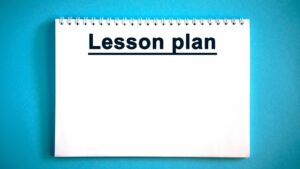Teaching Vocabulary in the EFL Classroom
Vocabulary is paramount in the classroom. According to Jack C. Richards, “Vocabulary, of course, is basic to all the skills.” Indeed, a student’s ability to produce and understand lexical items is crucial to his speaking, reading, writing, and listening skills.
Students typically pause when giving a response, and they use that moment to search their memories for the word or phrase needed to complete their ideas. In view of this, it is surprising that pronunciation and grammar have often been given more attention than vocabulary in EFL teacher training. While grammar and to a lesser extent-pronunciation-are important, communication breakdowns typically occur because of a lexical problem.
Thousands of Words
The English language has well over 100,000 words, so the teaching and acquisition of new lexical items can seem quite overwhelming. Fortunately, the number of words students need is much more limited.
Professor Richards states that 3,000 or 4,000 are enough for learners up to intermediate levels; college-level students need between 8,000 and 10,000 words. Almost all of the classes I have taught were beginner or intermediate-level, and that is probably true for the vast majority of EFL instructors.
In recent years, the Common European Languages Framework (CEFR) has become a guide for language levels in EFL. On the CEFR scale, B2 is considered upper intermediate, and a thorough knowledge of approximately 4,000 words is required.
Essential Words
An awareness of the number of words needed is not sufficient, however. Instructors also need to know what words to teach. One useful list of words is the 3000 Most Common Words in English by EF. If a word is not on that list, the odds are the student does not need to master it. An example of a word that is not on the list is: verdict. Unless a student works in law, she does not usually need to know this word.
A somewhat similar word-judgment-is on the list. An experienced teacher might realize that the second word can be used in both legal and non-legal contexts, and is the more useful one for the typical intermediate-level student. Capable students also develop the skill of sensing the importance of new lexical items they meet in or out of the classroom. But when in doubt, it is prudent to check this or a similar one.
Word Groups
Words should be taught and studied in lexical groups. Years ago, I studied lists of unrelated Spanish words while listening and repeating with a cassette tape. When later I became an English teacher, I learned that this practice was futile. The Spanish word for ashtray, for instance, should be on a list of household or living room items. When presenting or practicing a group of words in class, the teacher needs to focus on a particular lexical set, and avoid introducing non-related words.
Course textbooks provide lists of thematic vocabulary, so an instructor is usually able to focus on how and not what to teach. In the Interchange coursebooks, unit summaries contain the target vocabulary. This facilitates students’ review at home during a course and prior to examinations.
Various Techniques
During a recent workshop I did for the teachers at my school, I asked them what techniques they used when teaching new vocabulary. One thing all the teachers said they did was to say the new word clearly and write in on the whiteboard. Those initial steps, however, are not sufficient. After hearing the word once or twice, it is important to do a repetition drill with the students. Repetition drills, the most basic of all the drills, are useful with groups and individuals. Hearing the lexical item, seeing it on the whiteboard, and then saying it have a powerful synergistic effect. Finally, writing the new words-either in class or for homework-reinforces vocabulary acquisition.
Beware of Translating
Translating the word into the students’ mother tongue, in those cases where students have the same L1(first language), is problematic. First, some schools forbid the use of the students’ L1 in class. Second, hearing the equivalent, assuming there is an equivalent the L1, is not ideal for learning. In some cases, a student boldly translates a word for another student but the teacher still needs to check understanding and set up practice activities. In summary, translation should be used sparingly, if at all.
Dictionaries
Dictionaries are an essential tool for learning new vocabulary. Teachers almost everywhere today face students who have smartphones, and students love to use them to look up new vocabulary. But are they truly helpful? Are students better at vocabulary today than they were years ago before smartphones became ubiquitous? My school allows students to use their smartphone dictionaries in class but they should be used sparingly.
Students must be trained to guess the meaning of new words from the context of what they hear or read. I once taught a student who had the unproductive habit of looking up every single word he did not know in his smartphone. Only after speaking to him several times, was I able to get him to modify his habits. In general, I urge my students to use paper dictionaries, particularly while doing homework. I explain that electronic dictionaries are for convenience, but paper dictionaries are for learning.




